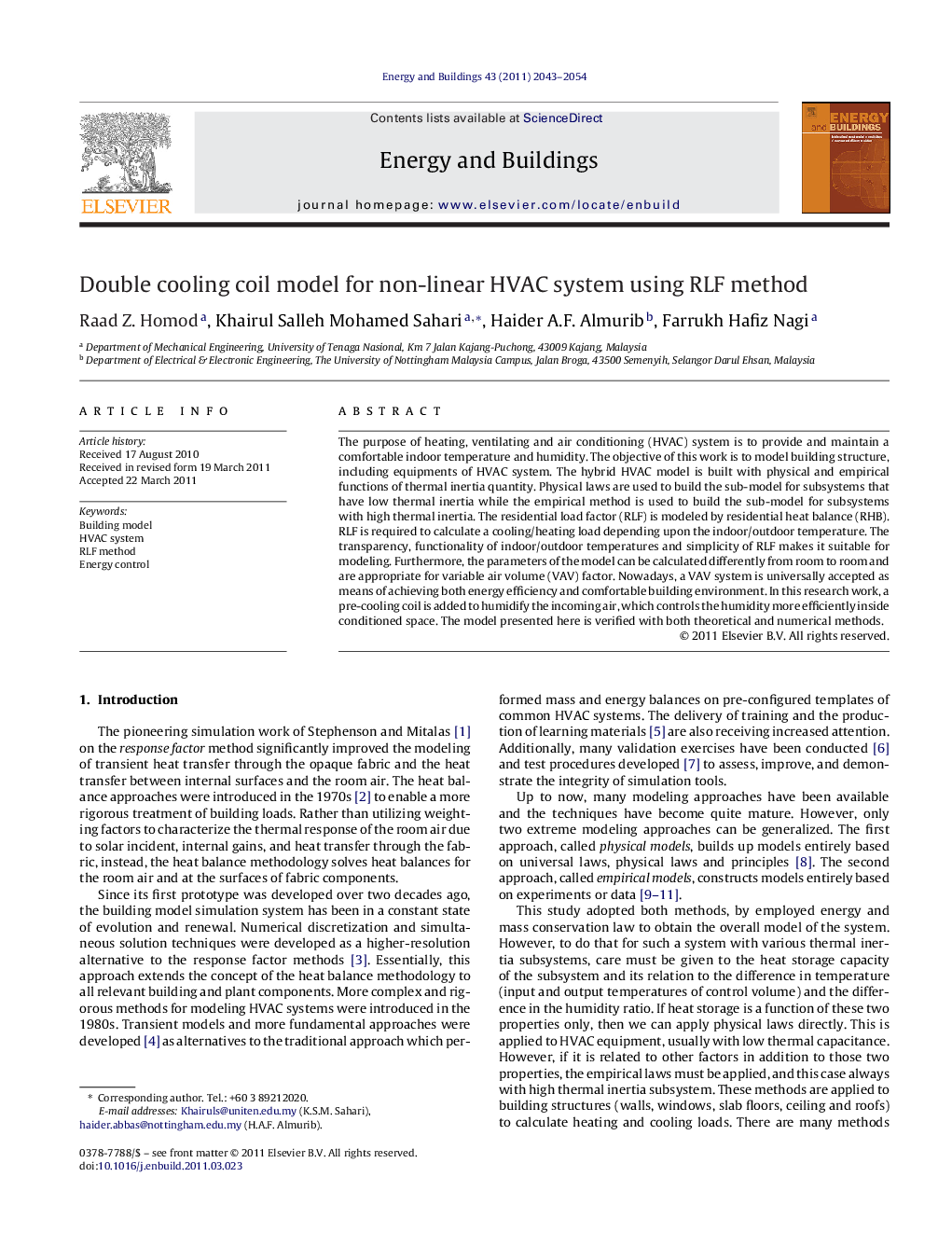| کد مقاله | کد نشریه | سال انتشار | مقاله انگلیسی | نسخه تمام متن |
|---|---|---|---|---|
| 264289 | 504098 | 2011 | 12 صفحه PDF | دانلود رایگان |

The purpose of heating, ventilating and air conditioning (HVAC) system is to provide and maintain a comfortable indoor temperature and humidity. The objective of this work is to model building structure, including equipments of HVAC system. The hybrid HVAC model is built with physical and empirical functions of thermal inertia quantity. Physical laws are used to build the sub-model for subsystems that have low thermal inertia while the empirical method is used to build the sub-model for subsystems with high thermal inertia. The residential load factor (RLF) is modeled by residential heat balance (RHB). RLF is required to calculate a cooling/heating load depending upon the indoor/outdoor temperature. The transparency, functionality of indoor/outdoor temperatures and simplicity of RLF makes it suitable for modeling. Furthermore, the parameters of the model can be calculated differently from room to room and are appropriate for variable air volume (VAV) factor. Nowadays, a VAV system is universally accepted as means of achieving both energy efficiency and comfortable building environment. In this research work, a pre-cooling coil is added to humidify the incoming air, which controls the humidity more efficiently inside conditioned space. The model presented here is verified with both theoretical and numerical methods.
► We used a physical-empirical hybrid modeling to describe the HVAC with its various thermal inertia parts.
► We systematize the HVAC system into five subsystems to reduce the complexity of the modeling process.
► We used the VAV-friendly RLF method for thermal loads calculations to enhance energy savings.
► We successfully verified the resulting model using both numerical and psychometric process line methods.
► We used pre-cooling coil to control indoor humidity and such method results in reducing energy waste.
Journal: Energy and Buildings - Volume 43, Issue 9, September 2011, Pages 2043–2054